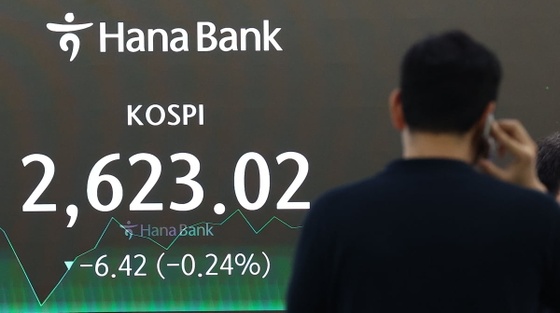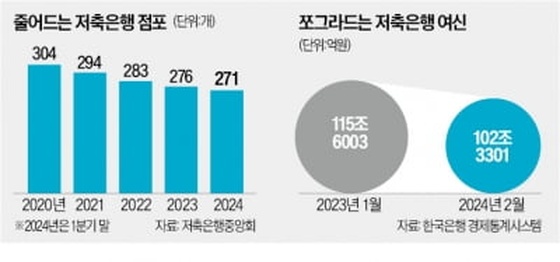입력2006.04.02 21:48
수정2006.04.02 21:50
오이겐 뢰플러 < 하나알리안츠 사장 >
현대 재무이론에서 투자는 기대수익과 위험의 관계로 설명된다.하지만 역설적으로 미래를 예측하기 위한 길잡이가 될수 있는건 과거 밖에 없다.
따라서 기대수익은 대개 과거의 평균치에 근거해 산출된다.
통계학적으로 평균을 계산하는 대상 기간이 길수록 미래를 예측하는데 보다 적합한 수치가 나온다. 긴 역사를 자랑하는 미국 시장의 경우 1900년부터 2004년 사이에 연평균 9.8%의 수익률을 기록했다. 이는 동일한 기간의 채권수익률 연평균 5%와 인플레이션율 3%를 훨씬 상회하는 수치이다.
과거 데이터를 대체할 만한 수단이 없음에도 불구,이런 방법은 두 가지 단점을 갖고 있다.
첫째,구조적인 변화가 이들의 예측력에 대한 신뢰도를 감소시키는데 이 문제는 기간이 짧을수록(가령 5,10,20년) 정도가 심해진다. 지난 1백5년간 미국 주식시장의 10년 단위 수익률은 가장 낮았을 때 1.2%였고 가장 높았을 때 20.6%였다. 최고와 최저 차이는 1년단위로 봤을 때 -40.8%와 +70.9%로 더 크다.따라서 투자하는 날짜에 따라 운좋은 투자자는 높은 수익률을 기록할수도 있고 다른 투자자는 평균을 밑도는 수익률을 기록할 수도 있다.
주식투자를 통한 부의 축적은 모든 투자자에게 해당하는 게 아니라 특정한 투자자에 한정돼 있다.
하지만 길게 보면 주식시장의 평균 수익률만 올려도 채권투자나 단기 금융상품 투자보다는 나은 성과다.여기에 인플레이션과 세금까지 고려한다면 이러한 차이는 더욱 커진다.
하지만 문제는 시장평균 수익률을 기록한다는 게 쉽지않다는 데 있다.사람의 평균수명과 한 사람이 저축할 수 있는 기간이 30,40대에 불과하다는 사실을 고려한다면 50년에서 1백년을 투자기간으로 본다는 건 비현실적이다. 인생의 다른 일과 마찬가지로 투자자로서의 운명 역시 일부는 운,즉 수익률이 높은 시대에 투자하는가,그렇지 않은가에 의해 좌우된다는 사실을 받아들여야 한다. 일반적으로 투자자들이 타이밍에 관해 성공적이지 못하다는 걸 경험적인 증거들이 보여준다.
정말 운이 좋았던 몇 명을 제외하고는 시장 주기나 흐름과 무관하게 재빠르게 시장에 들어갔다 빠지면서 돈을 벌수 있다는 것은 환상에 불과하다.
일반적인 투자자는 평균적으로 타이밍을 맞추려다 돈을 잃게 된다.
이러한 현상은 인간심리에서 비롯된다.
금융시장은 탐욕과 공포에 의해 움직인다는 격언이 있다.탐욕에 의해 투자자들은 큰 주가하락 직전에 시장에 뛰어든다. 다른 사람들이 돈을 버는 것을 보고 있다 강세장을 놓친 투자자들이 뒤늦게 뛰어드는 것이다.
이미 돈을 번 사람들도 성공에 자만하면서 위험에 대해 무감각해져 더 많은 자금을 쏟아붓게 된다.
하지만 주가가 하락하게 되면 투자자들은 두려움을 느끼게 되고 비관에 사로잡히게 된다.이제는 '공포'가 주된 테마가 돼 헐값에 주식을 매각하고 싼 가격에 매입할 수 있는 기회를 놓친다.
이런 인간심리의 변덕에 대처하기 위한 방법 중 하나는 일정한 규칙, 심지어는 계약에 의해 행동을 묶어놓는 것이다.
좋은 예로 적립식 주식저축을 들 수 있다.
투자자는 정기적으로 매달 정해진 금액을 주식펀드에 투자한다.이로써 큰 금액을 한 번에 투자하면서 발생하는 위험을 피할수 있다.더불어 주식시장이 하락하면 낮은 가격에 주식을 매입할수 있다. 투자목적이 장기적 평균시장 수익률에 근접하기 위한 것이기 때문에 주식저축에 가입한 투자자들은 지나치게 협소하거나 공격적 투자성향을 보이는 펀드를 피하고 장기적인 안목을 가진 펀드를 선택해야 할 것이다.
앞서 언급했듯이 평균수익률을 기록하는 것 자체가 역사적으로 비춰봤을 때 채권수익률을 3∼5% 상회하는 것이기 때문에 큰 매력이 있다.
더불어 정해진 규칙에 따라 투자하게 되면 시장의 방향을 맞추려는 고민으로부터 투자자가 자유로워지기 때문에 더 유쾌한 일에 마음을 쓸 수 있게 된다.
투자결정에 관한 심리적 스트레스를 즐기거나 이런 일을 위해 돈을 받고 일하는 전문 투자 관리자가 아니라면 장기적인 안목을 가지고 시간의 힘을 믿으며 평온함을 누리는 것이 좋을 것이다.
------------------------------------------------------------------------
< Savings plans and the benefits of rule based behavior>
Modern financial theory describes investments in terms of expected returns and risks. Paradoxically, the only available guide to the future is the past. Therefore, expected returns are normally derived from average historical returns.
For statistical reasons the longer the historical returns, the more suitable are they for that purpose. For the US market, which offers such a long and uninterrupted history of stock market data, the historical average annual return from 1900 to 2004 was 9.8%.
This compares to 5% p.a. for bonds and an inflation rate of 3.0% p.a. Even though there is hardly a reliable alternative to historical data, there are two major drawbacks.
Firstly, structural changes can make past returns a less reliable predictor of future returns, especially for shorter periods of say 5 or 10 or even 20 years.
The lowest 10 year return for US stocks in the 105 years to 2004 was -1.2%, the highest + 20.6%. Looking at one-year returns, the difference between best and worst is even bigger: -40.8% vs. + 70.9%. Thus, an investor starting to invest at a particular date in stocks might be lucky to get an exceptional high return or face the risk of a below average return. Only some, not all generations of investors can get rich with stock investments.
However, even the investors receiving "only" the average return get a very good deal, as stocks then would perform significantly better than money market and bond investments. This stock market excess return is even more pronounced after consideration of inflation and taxes.The second problem is that under real world investment circumstances achieving average returns is not that easy.
Given the average human lifespan and the fact that most people have meaningful savings only from their 30s or even 40s, an investment period of 50 or even 100 years is simply unrealistic. We have to accept , that - as in other areas of life - our fortune as investors depends to a certain degree on chance and luck, namely whether we start investing in good, average or bad stock market decades.
Empirical evidence shows that most investors are not good at market timing. Except for a lucky few, it is an illusion that - irrespective of market cycles and trends - we can make money just by shrewdly moving in and out of the market. In fact, the average investor is losing money from market timing activities. The major reason might be human psychology.
There is a famous saying that financial markets are driven by greed and fear. Greed leads investors to buy shortly before a major market downturn: watching the market going up and other people making money, investors who missed the rally tend to come in when it is too late. Even investors who already made money often pour in more as their success makes them overconfident and disregard risks. Then the market falls, investors get scared and more and more pessimistic.
Fear is now the dominating theme and makes investors to sell out at rock bottom prices or at least to miss the opportunity to buy cheap. One way to cope with the vagaries of human psychology is to bind our behavior by rules or even by contractual arrangements. A regular savings plan for stock investments is a great example.
An investor commits to invest a certain amount regularly, e.g. every month, into a stock fund. By doing so, the timing risk associated with investing a big amount at one point in time can be avoided. In addition, a savings plan ensures that the investor will buy at lower prices should the market fall.
A regular savings plan is a simple but powerful tool to get as close as possible to an average entry price and to an average stock market return. As the purpose is to capture the average long-term stock market return, savings plan investors should select funds with a long-term investment philosophy and avoid too narrow or extreme investment styles.
As already mentioned getting an average return at least according to historical norms means earning 3-5% more per annum than with bonds and therefore is highly attractive. Also, committing oneself to rule based investment frees the mind for more pleasurable activities than pondering how to best time the market and regretting if this should not work out.
Unless someone enjoys the psychological stress associated with investment decisions or is paid for that like a professional investment manager we better seek relief from that and enjoy the peace of mind of a long-term investor trusting in the averaging power of time.
![[한경에세이] 청소년 정책이라는 씨앗에 투자해야](https://img.hankyung.com/photo/202404/07.36439047.3.jpg)
![[조일훈 칼럼] 늙어가는 국가, 오늘만 살겠다는 사람들](https://img.hankyung.com/photo/202404/07.35383340.3.jpg)
![[데스크 칼럼] 여야 '부동산 협치' 시급하다](https://img.hankyung.com/photo/202404/07.18256415.3.jpg)


!["14억이 전기차 타야하는데"…인도, 리튬·니켈 확보전 뛰어든다 [원자재 포커스]](https://timg.hankyung.com/t/560x0/photo/202404/01.36506152.1.jpg)


![[단독]하이브 키운 '멀티 레이블'이 제 발등 찍었다](https://timg.hankyung.com/t/560x0/photo/202404/02.33877838.1.jpg)




![[공연소식] 국립합창단, 내달 '한국 가곡의 모든 것' 공연](https://timg.hankyung.com/t/560x0/photo/202404/ZK.36512510.3.jpg)